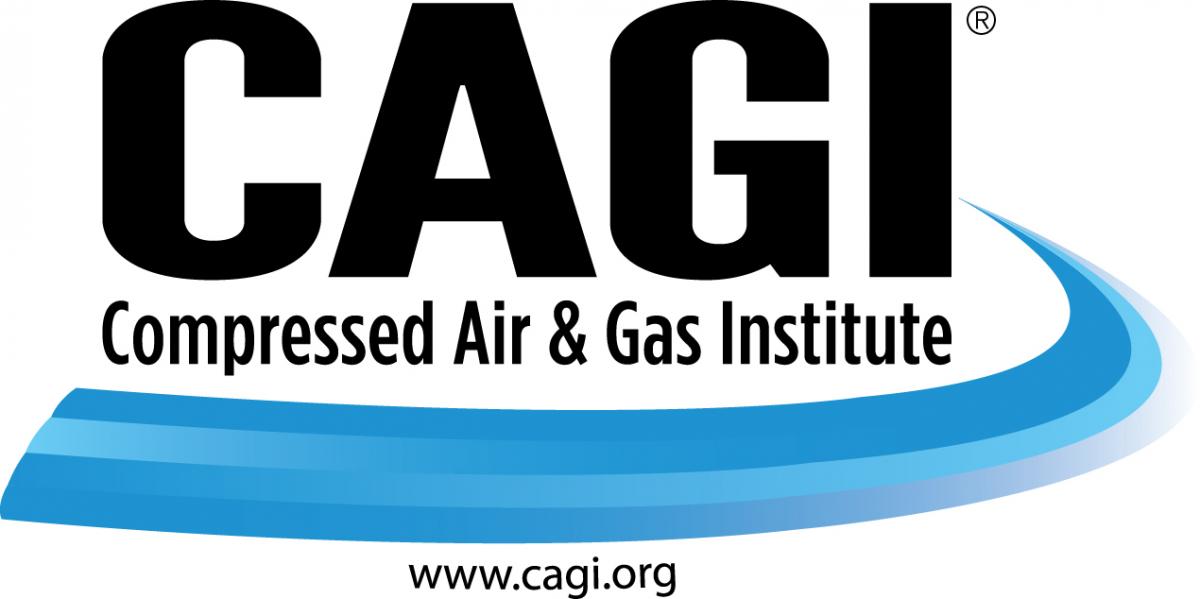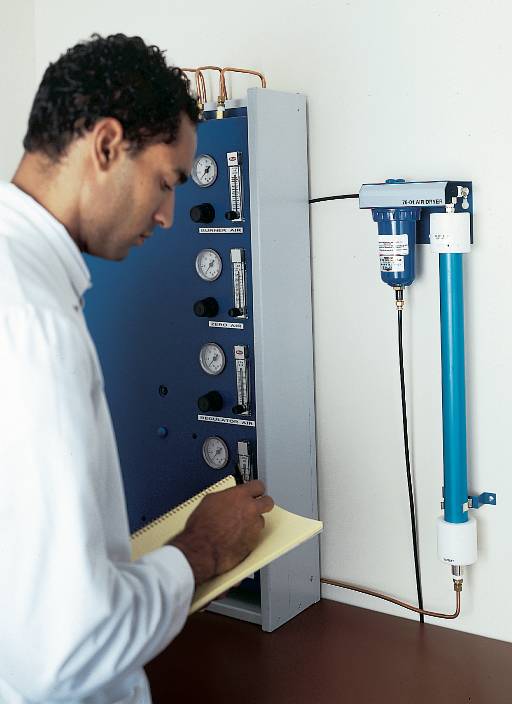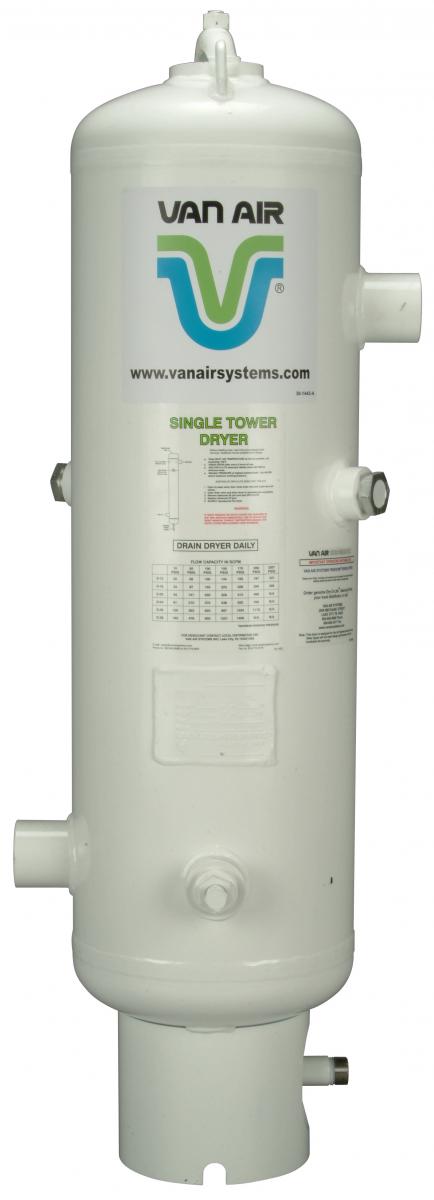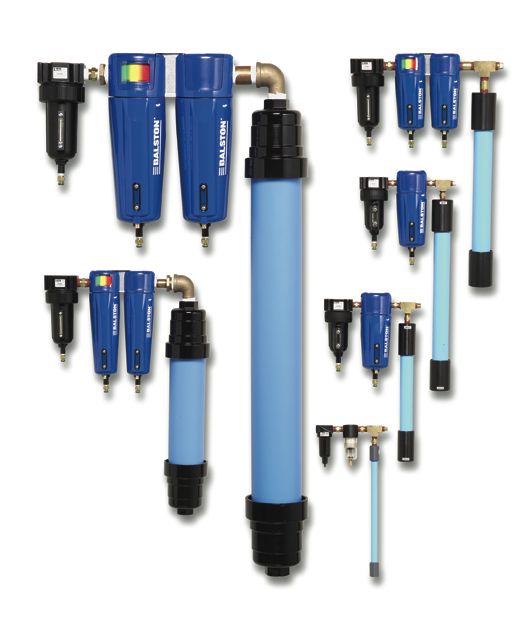Introduction
The Compressed Air and Gas Institute is the united voice of the compressed air industry, serving as the unbiased authority on technical, educational, promotional, and other matters that affect the industry. Mention utilities and energy in a discussion about manufacturing and the Big Three - water, electricity and natural gas - immediately come to mind. But compressed air is commonly accepted as a manufacturing facility's fourth utility. A careful examination of a facility's compressed air system will likely reveal several opportunities to improve the performance of the compressed air system by effectively and efficiently removing moisture from the compressed air system. The Compressed Air and Gas Institute (CAGI) committed to issuing a series of articles discussing moisture in the compressed air system. The first article covered “Why Do Compressed Air Systems Need Drying?” The second article "Types of Compressed Air Dryers: Refrigerant and Regenerative Desiccant" covered refrigerant and regenerative desiccant dryers. This article will provide a brief overview of heat of compression, non-regenerative single tower desiccant, deliquescent desiccant, and membrane dryers.
Compressed Air Dryer Selection
|
|
As a refresher, different methods can be used to remove the moisture content of compressed air. Current compressed air dryer types include the following products:
- Refrigerant type:
- Cycling
- Non-cycling
- Regenerative desiccant type:
- Heatless (no internal or external heaters)
- Heated (internal or external heaters)
- Heat of Compression
- Single Tower
- Deliquescent
- Desiccant
- Membrane
Because of such a wide breadth of product offering, we will cover each of these dryer types in some detail. It is always recommended that the compressed air treatment products be discussed in concert with the entire compressed air system and the application of the products. You should consult a compressed air expert to assure that the compressed air dryer selected is correct for your application.
In this part of the series we will cover the heat of compression and non-regenerative single tower desiccant dryers, as well as membrane dryers.
Regenerative Desiccant Type Dryers
These dryers use a desiccant, which adsorbs the water vapor in the air stream. A distinction needs to be made between adsorb and absorb. Adsorb means that the moisture adheres to the desiccant, collecting in the thousands of small pores within each desiccant bead. The composition of the desiccant is not changed and the moisture can be driven off in a regeneration process by applying dry purge air, by the application of heat, or a combination of both. Absorb means that the material which attracts the moisture is dissolved in and used up by the moisture as in the deliquescent desiccant type dryer.
-
Heat of Compression Type Dryers
Heat of Compression Type Dryers are Regenerative Desiccant Dryers which use the heat generated during compression to accomplish desiccant regeneration, so they can be considered as Heat Reactivated. There are two types, the Single Vessel Type and the Twin Tower Type.
The Single Vessel Heat of Compression Type Dryer provides continuous drying with no cycling or switching of towers. This is accomplished with a rotating desiccant drum in a single pressure vessel divided into two separate air streams. One air stream is a portion of the hot air taken directly from the air compressor at its discharge, prior to the aftercooler, and is the source of heated purge air for regeneration of the desiccant bed. The second air stream is the remainder of the air discharged from the air compressor after it passes through the air aftercooler. This air passes through the drying section of the dryer rotating desiccant bed where it is dried. The hot air, after being used for regeneration, passes through a regeneration cooler before being combined with the main air stream by means of an ejector nozzle before entering the dryer.
The Twin Tower Heat of Compression Type Dryer operation is similar to other Twin Tower Heat Activated Regenerative Desiccant Dryers. The difference is that the desiccant in the saturated tower is regenerated by means of the heat of compression from the hot air leaving the discharge of the air compressor. The total air flow then passes through the air aftercooler before entering the drying tower. Towers are cycled as they are for other Regenerative Desiccant Type Dryers.
Advantages of Heat of Compression Type Dryers include:
- Low electrical installation cost.
- Low power costs.
- Minimum floor space.
- No loss of purge air.
Disadvantages of Heat of Compression Type Dryers include:
- Applicable only to oil free compressors.
- Applicable only to compressors having a continuously high discharge temperature
- Inconsistent dew point.
- Susceptible to changing ambient and inlet air temperatures.
- Booster heater required for low load (heat) conditions.
Single Tower Type Dryers
-
Deliquescent
|
Single Tower Deliquescent Type Dryer |
Single Tower Desiccant dryers are used in smaller, more specialized applications where a continuous supply of clean, dry compressed air is not required. Typically these are point-of-use applications such as paint spraying operations or moisture-sensitive pneumatic tools. Pressure dew points from single tower desiccant dryers are as low as -40°F. Since these types of dryers are not self-regenerative, the desiccant must be replaced, or regenerated outside of the dryer, according to the amount of usage.
The deliquescent desiccant type dryer uses a hygroscopic desiccant material having a high affinity for water. The desiccant absorbs the water vapor and is dissolved in the liquid formed. These hygroscopic materials are blended with ingredients to control the pH of the effluent and to prevent corrosion, caking and channeling. The desiccant is consumed only when moist air is passing through the dryer. On average, desiccant must be added two or three times per year to maintain a proper desiccant bed level.
Deliquescent dryers normally are designed to give a dew point depression from 20oF to 50oF at an inlet temperature or 100oF. This means that with air entering at 100oF and 100 PSIG, a leaving pressure dew point of 80oF to 50oF may be obtained (a reduction of 20oF to 50oF from the inlet pressure dew point). This type of dryer actually dries the air to a specific relative humidity rather than to a specific dew point.
Advantages of Single Tower Deliquescent Desiccant Type Dryers include:
- Low initial capital and installation cost.
- Low pressure drop.
- No moving parts.
- Requires no electrical power.
- Can be installed outdoors.
- Can be used in hazardous, dirty or corrosive environments.
Disadvantages of Single Tower Deliquescent Type Dryers include:
- Limited suppression of dew point.
- Desiccant bed must be refilled periodically.
- Drainage of dissolved solution.
- Regular periodic maintenance.
- Desiccant material can carry over into down-stream piping if there is no after-filter and if the dryer is not drained regularly. Certain desiccant materials may have a damaging effect on down- stream piping and equipment.
- Some desiccant materials may melt or fuse together at temperatures above 80°F.
Membrane Type Dryers
|
Membrane Type Dryers with Prefiltration Systems |
Membrane technology has advanced considerably in recent years. Membranes commonly are used for gas separation such as in nitrogen production for food storage and other applications. The structure of the membrane is such that molecules of certain gases (such as oxygen) are able to pass through (permeate) a semi-permeable membrane faster than others (such as nitrogen) leaving a concentration of the desired gas (nitrogen) at the outlet of the generator.
When used as a dryer in a compressed air system, specially designed membranes allow water vapor (a gas) to pass through the membrane pores faster than the other gases (air) reducing the amount of water vapor in the air stream at the outlet of the membrane dryer, suppressing the dew point. The dew point achieved normally is 40°F but lower dew points to -40°F can be achieved at the expense of additional purge air loss.
Advantages of Membrane Type Dryers include:
- Low installation cost.
- Low operating cost.
- Can be installed outdoors.
- Can be used in hazardous atmospheres.
- No moving parts.
Disadvantages of the Membrane Type Dryers include:
- Limited to low capacity systems.
- High purge air loss (15 to 20%) to achieve required pressure dew points.
- Membrane may be fouled by oil or other contaminants (pre-filtration required).
Compressed Air & Gas Institute support The CAGI website is an excellent source for more information on the application of compressed air dryers, compressed air dryer and filtration selection and information on the Air Dryer & Filtration Section. For more detailed information, please call tel: 216-241-7333 or email.

To read more Air Treatment Technology articles, visit www.airbestpractices.com/technology/air-treatment.








